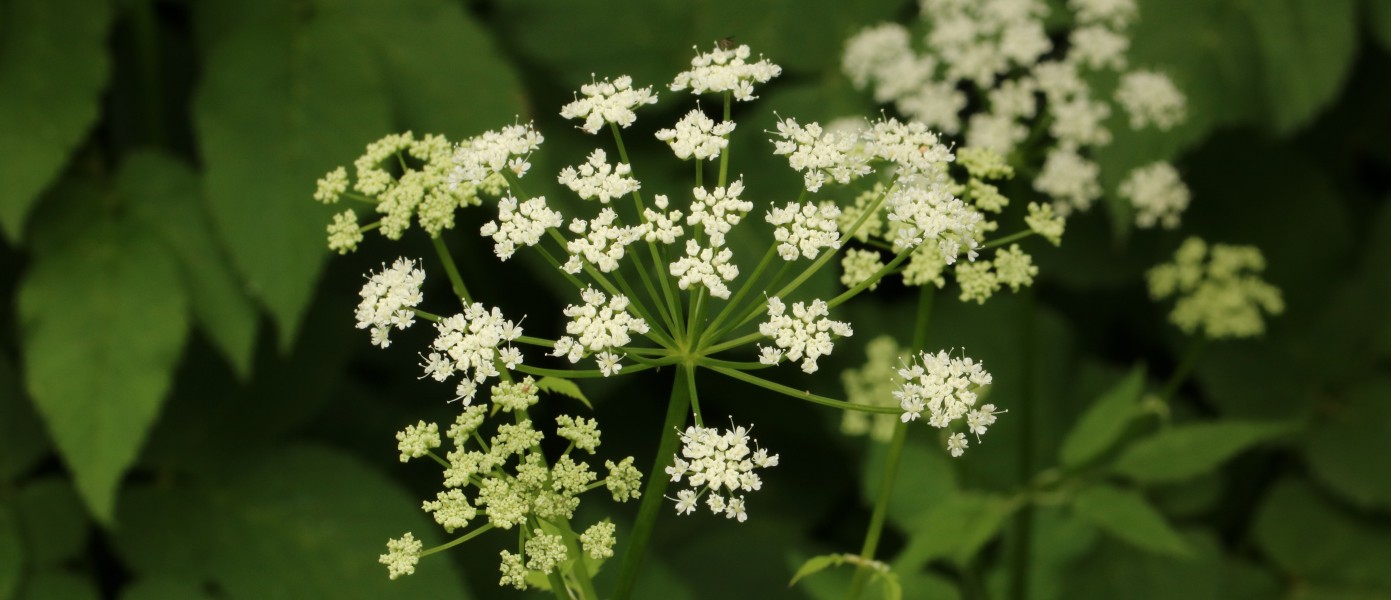Weed of the Month: Goutweed
Goutweed (Aegopodium podagraria), also called bishop’s weed and other names, is a lush, shade-loving groundcover that happily grows in dry, shady spots where nothing else will thrive. Despite the Missouri Botanical Garden’s dismissal of its flowers as “insignificant,” the delicate white umbels that appear in June above the green, sometimes variegated, ternate foliage, are lovely. The inflorescences resemble small Queen Anne’s lace blossoms and make nice cut flowers. So why is this well-known garden plant considered a weed? The answer lies beneath the surface.
Once goutweed becomes established, it spreads and spreads. If you haven’t planned ahead and created deep barriers to contain its underground rhizomes from creeping throughout the garden, within a short time the foot-tall foliage will engulf your astilbe, hosta, coral bells, and anything else planted nearby. The underground stems of goutweed work themselves among the roots of other plants and are hard to dig out without breaking off bits that can easily sprout new plantlets. When it escapes cultivation, goutweed readily grows under forest trees and eventually pushes out native plants and their codependent fauna, reducing the natural diversity of the ecosystem.
This European perennial was probably brought to North America by settlers as a spring potherb and medicinal treatment for gout and arthritis. Later, the attractive green-and-white cultivar ‘Variegatum’ was introduced as an ornamental groundcover. Said to be less aggressive than the straight species, the cultivar’s white coloring nevertheless tends to disappear over time, and the plant reverts to its all-green—and more troublesome—habit. Despite its bad reputation among seasoned gardeners—and its listing in some states as an invasive—goutweed is still widely available in nurseries.
I don’t recall how I first got goutweed in my shade garden; I suspect a chunk of rhizome hitchhiked in with a pot of astilbe. For several years, the pretty, variegated leaves were welcome and didn’t seem to spread too rapidly, but eventually the white started disappearing from the new foliage, losing a lot of its attraction for me. The patch also started encroaching on my other plantings, and I had to devote hours on my hands and knees pulling it out. The stems are brittle and break off at the base, making it impossible to pull out the entire plant with its rhizomatous root system, so the most I could ever gain was some temporary light and air for my other plants before it resprouted.
When I moved and started gardening at my new place, I didn’t bring over anything except a shovelful of oregano from the old vegetable garden, a good distance from the shade bed. Well, last spring, what showed up among the oregano but goutweed. This year, it came in like gangbusters and has required my hand-weeding it out two times already. Continuous removal of the aboveground parts of the plant will eventually weaken a goutweed infestation, but constant vigilance is the price for control over it. I may just have to forego the oregano and mow everything down…even goutweed can’t survive being turned into lawn!


